
JOURNAL OF ANALYTICAL CHEMISTRY
Scope & Guideline
Shaping the Future of Analytical Practices
Introduction
Aims and Scopes
- Development of Advanced Analytical Techniques:
The journal publishes research on cutting-edge techniques in analytical chemistry, including chromatography, mass spectrometry, electrochemical sensors, and spectrophotometry, emphasizing methodological advancements and improvements. - Application of Nanotechnology in Analysis:
A core area of focus is the incorporation of nanotechnology in analytical methods, such as the use of nanomaterials for sensor development and extraction processes, enhancing sensitivity and selectivity in chemical analysis. - Environmental and Food Safety Applications:
Research addressing analytical methods for detecting contaminants in environmental samples and food products is a significant focus, reflecting the journal's commitment to public health and environmental sustainability. - Bioanalytical Methods and Medical Diagnostics:
The journal features studies on bioanalytical methods for the detection of biomarkers and pharmaceutical compounds in biological matrices, showcasing advancements in clinical diagnostics and therapeutic monitoring. - Green Chemistry Practices:
A notable emphasis on sustainable and eco-friendly analytical methods is evident, with research exploring green solvents, reduction of hazardous materials, and low-energy consumption techniques.
Trending and Emerging
- Integration of Artificial Intelligence and Machine Learning:
There is a rising trend in the application of AI and machine learning techniques for data analysis and interpretation in analytical chemistry, enhancing the capabilities of traditional methods and enabling complex data handling. - Advancements in Miniaturization and Portable Devices:
The development of portable and miniaturized analytical devices is gaining traction, which allows for on-site analysis and real-time monitoring, particularly in fields such as environmental science and clinical diagnostics. - Focus on Biochemical and Biomedical Applications:
An increasing number of studies are dedicated to biochemical applications, including drug monitoring and biomarker detection, showcasing the journal's commitment to advancing medical diagnostics. - Innovations in Sample Preparation Techniques:
Research on novel sample preparation methods, such as microextraction techniques and the use of new materials for sample cleanup, is becoming more prevalent, emphasizing the importance of efficient and effective sample handling. - Use of Sustainable Materials in Analytical Methods:
The journal is seeing an increase in studies exploring the use of sustainable and biodegradable materials in analytical methods, aligning with global efforts towards sustainability in science.
Declining or Waning
- Traditional Analytical Methods:
There has been a noticeable decrease in papers focusing solely on conventional analytical methods without incorporating novel advancements or interdisciplinary approaches, suggesting a shift towards more innovative and integrated methodologies. - Basic Chemical Analysis without Specific Applications:
Research that presents basic chemical analysis without a specific application or context appears to be declining, as the journal increasingly favors studies that demonstrate practical applications and real-world relevance. - Focus on Non-Sustainable Practices:
Research that does not address sustainability or environmental impact is becoming less prominent, reflecting a growing trend towards green chemistry and eco-friendly analytical practices.
Similar Journals

Science Advances
Fostering Collaboration for Global Scientific ProgressScience Advances, published by the American Association for the Advancement of Science, is a leading open-access journal in the field of multidisciplinary sciences. Since its inception in 2015, it has rapidly gained prominence, achieving a remarkable Q1 ranking in both Medicine (miscellaneous) and Multidisciplinary categories, underlining its impact and relevance in contemporary research. With an impressive Scopus ranking of #7 out of 171 in the Multidisciplinary field, it proudly sits in the 96th percentile, showcasing its dedication to disseminating high-quality research across various scientific domains. This journal not only provides open access to innovative findings but also aims to foster collaboration and maintain a high standard of scholarly communication among researchers, professionals, and students globally. Stay updated with some of the most groundbreaking advancements and contribute to the collective pursuit of scientific knowledge through Science Advances.
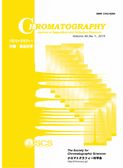
Chromatography
Transforming sample analysis with cutting-edge chromatographic research.Chromatography is an esteemed journal published by the SOC CHROMATOGRAPHIC SCIENCES, dedicated to advancing the field of chromatographic techniques and their applications across various disciplines, including analytical chemistry, biochemistry, and environmental science. By facilitating the exchange of high-quality research, Chromatography plays a pivotal role in enhancing methodologies and technologies that drive innovation in sample analysis. While the journal is not currently open access, it maintains a rigorous peer-review process, ensuring the publication of valuable and impactful studies. Researchers, professionals, and students alike can benefit from its comprehensive coverage of chromatography-related advancements, making it a vital resource for anyone engaged in this dynamic area of study.
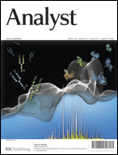
ANALYST
Empowering Innovation in Chemistry and BeyondANALYST, published by the Royal Society of Chemistry, stands as a prestigious journal in the fields of Analytical Chemistry, Biochemistry, Electrochemistry, Environmental Chemistry, and Spectroscopy. Esteemed for its rigorous peer-review process and influential contributions to the advancement of scientific knowledge, the journal has been a vital resource for researchers and professionals since its inception in 1876. With an impressive Scopus ranking that places it in the top quartile for several chemical disciplines, it specifically ranks #12 in Spectroscopy and #31 in Analytical Chemistry, reflecting its robustness and relevance in the analytical sciences. Though currently not an Open Access publication, ANALYST provides valuable insights and cutting-edge research that help drive innovation and discovery in various scientific realms. Researchers and students alike will benefit from its commitment to disseminating high-quality research that addresses contemporary challenges and promotes interdisciplinary collaboration.

Pakistan Journal of Analytical & Environmental Chemistry
Transforming Challenges into Research OpportunitiesPakistan Journal of Analytical & Environmental Chemistry, published by the University of Sindh, National Centre of Excellence Analytical Chemistry, is a distinguished platform that has been committed to promoting high-quality research in the fields of analytical and environmental chemistry since its inception. With an ISSN of 1996-918X and an E-ISSN of 2221-5255, this journal has established itself as an open-access resource since 2007, facilitating the dissemination of knowledge to a global audience. Acknowledged for its contributions, the journal currently holds a Q4 category ranking in both Analytical Chemistry and Environmental Chemistry as of 2023, with Scopus rankings placing it within the challenging competitive bracket. The journal aims to publish original research, reviews, and technical notes that elucidate contemporary challenges and advancements, making it an essential read for researchers, professionals, and students who are exploring innovative methodologies and solutions in chemical analysis and environmental monitoring. By fostering a collaborative research environment and encouraging multidisciplinary approaches, the Pakistan Journal of Analytical & Environmental Chemistry plays a crucial role in advancing the field and addressing environmental concerns in Pakistan and beyond.

MICROCHEMICAL JOURNAL
Fostering Knowledge in Analytical and Spectroscopic AdvancesMicrochemical Journal, published by Elsevier, stands as a leading scholarly publication in the fields of Analytical Chemistry and Spectroscopy, boasting impressive rankings of Q1 and Q2 in their respective categories for 2023. With an H-index reflecting its substantial impact and relevance, this journal has been a cornerstone of research dissemination since its inception in 1957, and it continues to play a vital role in advancing the methodological and technological innovations within these disciplines. The journal presents peer-reviewed articles that explore a wide array of topics, making it an essential resource for researchers, professionals, and students keen on the latest advancements in microchemical processes and techniques. Although it does not currently offer open access options, its publication through Elsevier ensures a high standard of academic integrity and wide accessibility through various academic institutions. With a strong Scopus ranking—9th in Chemistry Spectroscopy and 22nd in Analytical Chemistry—Microchemical Journal is an indispensable platform for empirical studies, insightful reviews, and pioneering methodologies in the microchemical domain.

Acta Chemica Iasi
Fostering Collaboration in Cutting-Edge ChemistryActa Chemica Iasi is a distinguished open-access journal dedicated to advancing the field of chemistry, published by the esteemed ALEXANDRU IOAN CUZA UNIVERSITY PRESS located in Iasi, Romania. Since its inception, this journal has served as a vital platform for the dissemination of significant research findings, theoretical advancements, and methodological innovations in various chemistry disciplines. As an open-access publication since 2013, it provides unrestricted access to high-quality articles, fostering collaboration and knowledge sharing among researchers, professionals, and students globally. Although specific metrics such as H-Index and Scopus rankings may be forthcoming, the journal's commitment to rigor and excellence ensures that it remains an invaluable resource for those seeking to stay at the forefront of chemical research. With a focus on promoting scientific inquiry and innovation, Acta Chemica Iasi continues to uphold a legacy of scholarly excellence and contribution to the chemical sciences.
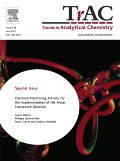
TRAC-TRENDS IN ANALYTICAL CHEMISTRY
Diving Deep into the Latest Methodologies and TechnologiesTRAC - Trends in Analytical Chemistry is a prestigious journal published by Elsevier Science Ltd, situated in the Netherlands. With an impressive impact factor reflected in its Q1 rankings across three major categories—Analytical Chemistry, Environmental Chemistry, and Spectroscopy—this journal stands at the forefront of disseminating pioneering research and advancements in the field of analytical chemistry. Established in 1981, TRAC provides a comprehensive platform for researchers to share influential studies and insights related to the latest trends, methodologies, and technologies in analytical techniques. Recognized globally, the journal excels in fostering cross-disciplinary dialogue and innovation, making it an indispensable resource for academics, professionals, and students alike. Explore the latest issues to stay abreast of cutting-edge developments that shape the analytical sciences.
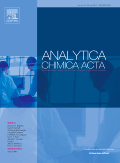
Analytica Chimica Acta
Elevating the discourse in spectroscopy and biochemistry.Analytica Chimica Acta is a prestigious peer-reviewed journal published by ELSEVIER, renowned for its significant contribution to the fields of analytical chemistry, biochemistry, environmental chemistry, and spectroscopy. Established in 1947, this journal has solidified its reputation, reflected in its impressive impact factors and Scopus rankings, including a Q1 classification in Analytical Chemistry and Spectroscopy, and a Q2 ranking in both Biochemistry and Environmental Chemistry. With its comprehensive scope, Analytica Chimica Acta aims to publish innovative research, critical reviews, and technical notes that advance the understanding and application of analytical methods. As an essential resource for researchers, professionals, and students alike, it encourages the dissemination of high-quality research that addresses contemporary challenges in chemical analysis and promotes interdisciplinary collaboration. While the journal operates primarily on a subscription basis, it also offers unique opportunities for authors to reach a broad audience and engage in the global scientific discourse.
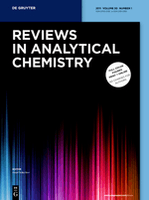
REVIEWS IN ANALYTICAL CHEMISTRY
Bridging Research and Practice in Analytical ChemistryREVIEWS IN ANALYTICAL CHEMISTRY, published by De Gruyter Poland Sp. z o.o., serves as a pivotal resource in the field of analytical chemistry, with a notable impact factor indicative of its scholarly significance. As an Open Access journal since 2020, it ensures widespread dissemination of high-quality research articles, facilitating knowledge sharing among researchers, professionals, and students alike. With its origins tracing back to 1980, the journal has adeptly adapted over the years to encompass emerging trends and innovations within analytical methodologies, maintaining its relevance and authority in the discipline. The journal is ranked in the Q2 category of analytical chemistry in 2023 and holds a commendable Scopus rank of #32 out of 156, reflecting its strong performance and the quality of the studies published. Researchers looking for cutting-edge reviews and insights will find this journal an invaluable platform for advancing their knowledge and research in analytical chemistry.

TALANTA
Elevating Standards in Analytical MethodologiesTALANTA, published by Elsevier, is a premier international journal that serves as a vital platform in the field of analytical chemistry. Since its inception in 1958, TALANTA has provided a comprehensive forum for the dissemination of groundbreaking research and developments in chemical analysis, spanning a wide array of topics including biochemistry and spectroscopy. With an impressive impact factor and ranking in the Q1 quartile within its category for 2023, it is ranked #12 out of 156 journals in Analytical Chemistry by Scopus, placing it among the most influential journals in its field. Researchers, professionals, and students benefit from its stringent peer-review process and high-quality content that drives advancements in analytical methodologies and applications. TALANTA's commitment to fostering innovation and excellence in research makes it an indispensable resource for anyone at the forefront of scientific inquiry.